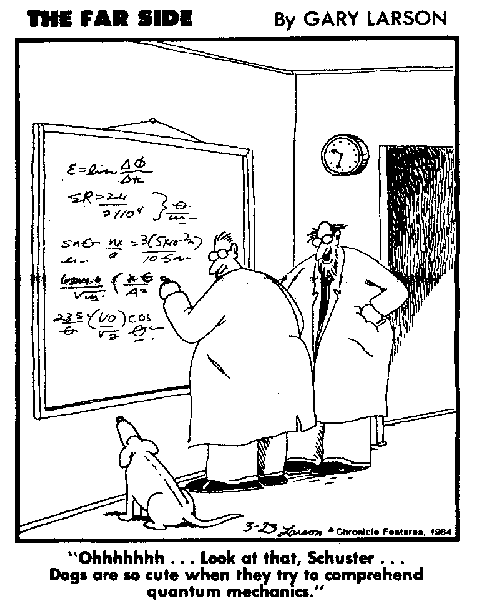I’ve previously complained that the Kalam Cosmological Argument is drivel, but a recent video reminded me that intellectual sophistication can arise from confronting drivel, because it helps expose more people to the tenuous, changing, and incomplete journey of modern science and philosophical interpretation/translation. I knew I was largely in alignment with modern science when I wrote that particular post (and others), but the video, considering the figures involved, provides additional compelling insights to push the viewer into thinking more carefully about the challenges and limits of our collective understanding of who we are, where we came from, and what it means to be here now.
I highly recommend it:
And what I think is most worth emphasizing and that may not be understood by laypeople and religious supplicants, or may not be internalized as deeply as it should be, includes:
- Our everyday experience and intuitions about similarly-sized matter are simply not applicable to quantum and relativistic scales, or to the implications of cosmological theories. “Causality” is one of those concepts. We see this in everything from the simple case of radioactive decay to contra-causal quantum experiments, and ultimately in the question of causation as applied to the universe itself.
- Science operates by applying metaphors, finding the limitations of those metaphors, filtering by empirical results, and then using the refined science as a new metaphor. Most of those metaphors are incompatible with everyday experience. If they weren’t they wouldn’t be so vexingly difficult to understand.
- Many philosophical worries about logical inconsistency are abstractly derived from everyday reasoning and may not apply to modern understandings of causality, space, and time.
- Humility about what we don’t know and effort to unravel it remains the best approach to our mysterious selves and the world.
 The simulation hypothesis is perhaps a bit more interesting than how to add clusters of neural network nodes to do a simple reference resolution task, but it is also less testable. This is the nature of big questions since they would otherwise have been resolved by now. Nevertheless, some theory and experimental analysis has been undertaken for the question of whether or not we are living in a simulation, all based on an assumption that the strangeness of quantum and relativistic realities might be a result of limited computing power in the grand simulator machine. For instance, in a virtual reality game, only the walls that you, as a player, can see need to be calculated and rendered. The other walls that are out of sight exist only as a virtual map in the computer’s memory or persisted to longer-term storage. Likewise, the behavior of virtual microscopic phenomena need not be calculated insofar as the macroscopic results can be rendered, like the fire patterns in a virtual torch.
The simulation hypothesis is perhaps a bit more interesting than how to add clusters of neural network nodes to do a simple reference resolution task, but it is also less testable. This is the nature of big questions since they would otherwise have been resolved by now. Nevertheless, some theory and experimental analysis has been undertaken for the question of whether or not we are living in a simulation, all based on an assumption that the strangeness of quantum and relativistic realities might be a result of limited computing power in the grand simulator machine. For instance, in a virtual reality game, only the walls that you, as a player, can see need to be calculated and rendered. The other walls that are out of sight exist only as a virtual map in the computer’s memory or persisted to longer-term storage. Likewise, the behavior of virtual microscopic phenomena need not be calculated insofar as the macroscopic results can be rendered, like the fire patterns in a virtual torch.